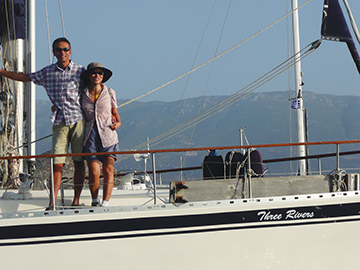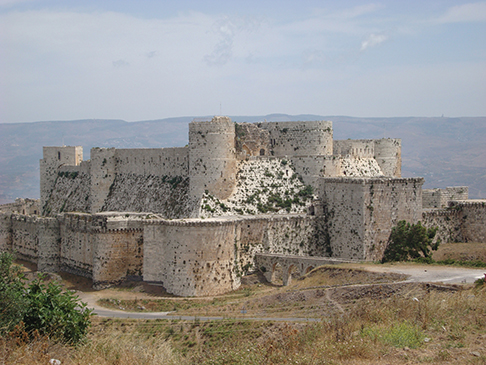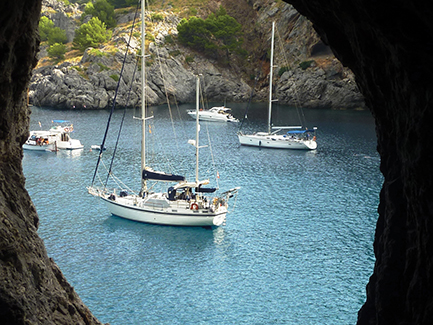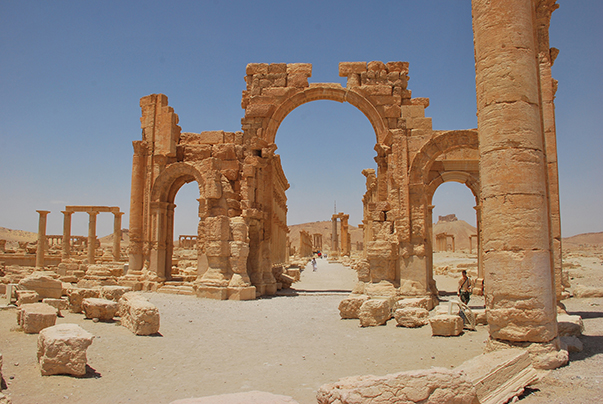The Eastern Med Yacht Rally opens doors to the wonders of the ‘cradle of civilization” (published March 2013)
In the spring of 2011, as we enjoyed a tranquil life aboard in Turkey, we were transfixed by the news as the Arab Spring unfolded. We were staying in Kemer, southern Turkey, and the Middle East and North African coasts of the Mediterranean Sea were only a few hundred miles away. In fact, we had sailed to many of those countries just a few months prior, in the summer of 2010, when we had joined the East Mediterranean Yacht Rally (EMYR). Looking back, we were glad we completed the journey when we did. In 2012, we would have encountered a much different political climate that would have added another dimension of challenges to the cruise.
The EMYR is comprised of two segments: the Turkish Coast, which starts from Istanbul in the Aegean Sea, works its way down western Turkey and finishes at Alanya in southern Turkey; and the International segment, which starts from Alanya and visits Northern Cyprus, Syria, Lebanon, Israel and Egypt, with plenty of sailing and sightseeing along the way. The fees are reasonable and all port planning, tours and entry and exit paperwork are taken care of. We participated in the International part only so we joined the rally in Alanya, about 200 miles from Marmaris where we were docked.

The weather en route to Alanya had called for 15 to 25 knots in the open sea with some expected rough patches. Heading out of Marmaris Bay, we had a few nice gusts and by late afternoon, the wind was steady at more than 20 knots on the beam. With the genoa and mizzen up, Three Rivers was sailing well at 8 knots under a beautiful sky. The Mediterranean Sea was a brilliant turquoise blue, sparkling with whitecaps and it was a pleasant sail until the waves began to build, and when the wind shifted to put us on a dead run, the rolling seemed unbearable.
On the third day, right on schedule, we arrived at Alanya. The city fortress rose dramatically under the rising sun, with low-lying clouds and morning mists, it was an impressive scene, which was only heightened by our joy of arriving at our first port. We registered with the EMYR organizers and received our rally package, which included detailed information on the rally, t-shirts, carrying bags and flags. We met up with our designated group and were introduced to other rally members. There were more than 70 EMYR yachts at the marina representing many different nationalities and the boats docked next to us were filled with Italians and Australians.

CYPRUS & SYRIA
The first port we visited was Girne, Cyprus, about 100 miles from Alanya. We sailed at 4 knots for a few hours with 10 knots of following winds before turning on the engine, since we had to reach Girne at an exact time. In the open sea, the waves began to pile up and we learned that a gale had passed by earlier, which resulted in large uncomfortable rollers. We took three-hour watches and kept a good lookout due to a greater risk of collision while sailing in close company with a large convoy. At one point, we passed a boat that was off course and we had to take evasive action to avoid a collision.
We had a wonderful time touring Cyprus before sailing back to Mersin in Turkey. Mersin is a large city with a well-developed waterfront. Within a 15-minute walk of the old town you can find an abundance of things being sold inexpensively, including fresh produce, fish, meat and pastries. A glass of freshly squeezed orange juice can be had for 70 cents.
We took a bus tour to do some sightseeing and found the area steeped in history, with many well-preserved ruins dating back to the Hellenic period. At Narlikuyu, we visited the famed Heaven and Hell limestone caves that are deep in the belly of a mountain near the sea. An underground river passes through the Well of Hell and flows into the sea at Narlikuyu. The fish from this inlet, which is less salty than the Mediterranean, are famous for their taste, and we were treated to a delicious lunch at one of the seaside restaurants.
The trip to Syria was especially interesting. Syrian security requires that yachts take a specific route and stay offshore by at least six miles. We then had to make a 90-degree course change that put us on a heading straight into the city harbor under the watchful eyes of the Syrian Navy. After two hours, we settled into our spot in the harbor at Latakia by setting a stern anchor and rafting between other yachts.
Syria is the cradle of civilization and a crossroads where east meets west. Here was the last strong hold of the Crusaders as well as a place with 5,000 years of continuous history that had been an independent country for only a few generations. We found Latakia a drab city with uniformly run-down buildings from the Sixties. Yet, Christians and Muslims were living here side-by-side in harmony.

But, you come to Syria mainly to visited historical sites, many of which are from Roman times. We joined the EMYR bus tours and traveled inland crossing arid mountains to visit the Lost City at Idleb, where an impressive Roman city was built and then suddenly abandoned. We checked out the Crac Des Chevaliers (Castle of the Crusaders), which was the last castle held by the Crusaders against the Muslim tide. Almost entirely intact, the castle is an amazing accomplishment of architecture and engineering.
Continuing south, we went to Damascus, which claims to be the world’s oldest continuously inhabited city. We strolled through the grand bazaar at the center of the old city and visited the Umayyad Mosque. The next day we drove through the vast Syrian Desert to visit Palmyra, a metropolis built in a desert oasis in the 3rd Century A.D., which prospered until the over-ambitious Queen Zenobia defied Rome’s rule. A persistent desert wind blew up the yellow sand and under the shade it was 35 degrees Celsius. Over two millenniums ago, a kingdom prospered at the oasis and a majestic Roman city was built. The meticulously constructed columns and arches still stand under the same eternal blue sky and scorching sun.
ONWARD TO LEBANON
The weather report promised moderate winds at 15 to 20 knots from the southwest—the wrong direction. That’s the way it is with sailing, so we took off early in the afternoon to make use of the wind for the 100-mile crossing. We sailed close hauled at 6 knots on a choppy sea before the wind backed to almost dead on the nose; we turned on the engine and motor-sailed against an increasingly choppy sea and adverse current.
Our heavy displacement Nauticat ploughed through the heavy seas with no problem and the autopilot performed faithfully. We were experiencing the rough side of the Mediterranean Sea—a short, nasty chop that builds up quickly, similar to our home waters of Lake Erie. The waves occasionally washed over the entire foredeck and ran over the pilothouse windows. However, inside we were relatively comfortable and the cockpit remained dry. We took our usual night watches, keeping close eyes on surrounding yachts as some were motoring while others were tacking back and forth.
Beirut is known as the “Paris of the Middle East”, and Lebanon is a modern, well-developed country with many first-rate harbors and beautiful cities. Despite its war-torn past, Beirut is attractive with a beautiful waterfront and stylish downtown where luxury cars flashed along the highways.
Sheltered by tall mountains and moderated by ocean breezes, the climate here is cooler than the desert-influenced southern regions of Turkey and Syria. Apartment buildings crowded the hills that overlook the harbor and, at night, the residential lights brightened up the evening sky and shimmered on the water.

We took tours and visited some famous sites, including Baalbeck in the Bekaa Valley. We were half expecting to see rocket launchers aimed towards Israel, but all we saw were people peacefully going about their business. Known as the “City of the Gods,” the Roman temple of Baalbeck is the largest known Roman temple ever built. Its construction took over 100 years and after two millennia, much of the temple is still standing.
ISRAEL AND EGYPT AHEAD
The sail to Haifa, Israel, was also quite interesting. We finally had some fun sailing close hauled between 5 and 7 knots, with all three sails up and set. Once we entered Israel’s territorial waters, we were under the watchful eyes of a naval warship, pilot boats and a helicopter.
A navy ship circled each yacht, identified the yacht from the EMYR list, and called up the yacht by radio for further confirmation of crew details. When this was completed, each yacht was then permitted to change course to enter Israel. When we were two miles off Haifa harbor, we were intercepted by another patrol boat carrying police and immigration authorities to check our identities. We were instructed to hand over our passports by dropping them into a fishing net held up by an Israeli officer. After a thorough check, our passports were returned to us in the same interesting fashion.
The sailing trip to Egypt was the most demanding leg of EMYR. It passed through a hazardous stretch of water, filled with oil rigs, fishing boats and the busy entrance to the Suez Canal, so we chose to leave Three Rivers in Haifa and to crew on another boat. The sail to Port Said, Egypt, started with beautiful conditions under a sunny sky and over a flat sea. Of the 70 yachts originally with EMYR, many had decided not to continue onto Egypt, so there were only 38 yachts on this trip. We passed several hazards along the way, including an oil rig and a floating oil drum, and were faced with a long string of fishing boats, some with lights, some without. At one point, we counted a hundred boats on the radar.
The procession into Port Said, the terminus to Suez Canal, was pre-arranged with canal officials and EMYR yachts were required to form a circle at 5:30 a.m. At this point, commercial traffic into Suez was temporarily halted, and all 38 yachts were to file into the Canal entrance, spaced 50 meters apart. That was the plan. However, due to various delays, all of the yachts had to wait outside the harbor for several hours, some anchored and some just circling slowly on a choppy sea. After five hours of waiting and circling, it all worked out and by 10 a.m. we were safely tied to the dock in Arsenal Basin; a secure area normally used for commercial vessels.
SAILING FROM ISRAEL TO TURKEY
The EMYR ended in Herzliya, Israel. The marina there was lovely and we stayed for almost a month while we took land-cruises to visit Jerusalem and Jordon. Finally, we needed to get back to Turkey, which is a 300-mile open-sea passage.
Once the coastline and high-rises of Israel fell below the horizon, there was nothing but a vast sea of endless shades of indigo dotted with white caps, under a friendly sky with a few patches of cotton clouds. We were truly alone now, unlike the EMYR where we were always sailing in the company of other boats and our position was always known and periodically updated with the team.
We managed to sail about half the way and motor-sailed the rest. The wind was fairly steady at around 10 knots from the northwest and blew through 200 miles of fetch on this side of the Med. It was an uncomfortable ride with Three Rivers plowing through two-meter swells and after our rest in Israel, it took us a while to regain our sea legs. By the third night, with the Turkish coast only 50 miles away, the wind direction shifted to the west and on the beam. The sea was also much calmer, which made for a smooth sail as a full moon shone through the cloudless sky, lighting up the sea behind us—a perfect way to end our 1,400-mile sailing odyssey.

Ben and Eliza left their suburban life in Ontario, Canada, three years ago and have been cruising full-time aboard Three Rivers, a 1986 Nauticat 43 pilothouse ketch. They started from Turkey and slowly worked their way west to the Balearic Islands before deciding to return east to Sicily to spend more time in the eastern Med. They are currently enjoying the balmy winter in Licata, Sicily.
















